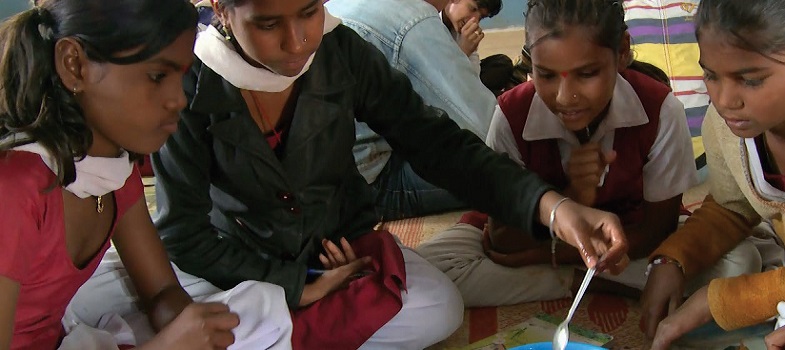3 What rhymes teach
Rhymes help to build confidence in using English independently. They are a fun way to expand students’ early vocabulary, and they introduce simple sound and sentence patterns. Here is an example of a rhyme:
One, two, three-four-five
Once I caught a fish alive
Six, seven, eight-nine-ten
Then I let it go again.
What vocabulary, sentences patterns and sound patterns does this rhyme teach? Check your ideas with ours:
- Rhyming words and sound patterns: The rhymes are ‘five’ and ‘alive’, and ‘ten’ and ‘again’. You can help students to learn more words that rhyme with these pairs, e.g. ‘dive’, ‘hive’ and ‘arrive’ (they may notice also that ‘give’ does not rhyme with ‘five’), and ‘men’, ‘hen’, ‘pen’, ‘when’ and ‘then’.
- Vocabulary: The number names for one to ten; ‘alive’ (opposite of dead); ‘again’ (once more, to repeat).
- Sentence patterns: These include ‘let …’ (allow, permit) and ‘once …’ (to speak about an incident in the past). You can demonstrate to students and teach them how to use words like these in different ways. Encourage and help students speak about what they want to do and what has happened, using ‘let …’ and ‘once …’. For instance: ‘Let it go!’; ‘Let us out!’; ‘Let me play!’; ‘Let him read’; ‘Let her speak’; ‘Let me come in!’; ‘Let the baby sleep!’; ‘Once upon a time …’; ‘Once I got lost’; ‘Once I ate ten rotis!’; ‘Once I saw a crocodile’; ‘Once I fell down and got hurt’; ‘Once I found a baby bird’.
Activity 3: Using rhymes in English
This is a planning activity for you to undertake in preparation for a lesson.
Go to Resource 3 and choose a short poem, rhyme or song in English to do with your students. You can also find a good rhyme or poem from your English textbook.
Practise saying or singing it in English, and practise doing the related actions. In the poem you chose, make sure you can identify:
- the rhyming words and sound patterns
- the sentence patterns
- key vocabulary.
Make a plan to use the rhyme with your students. Review your plan with a colleague or your headteacher.
Will you incorporate the poem into the English lesson, or do it at some other time?
Where will you teach it – inside the classroom or outside?
Is there a tune you can put to the words? Are there movements or gestures you can use?
What resources will you need? For example, will you use pictures or word cards to help students understand?
2 Singing poetry
